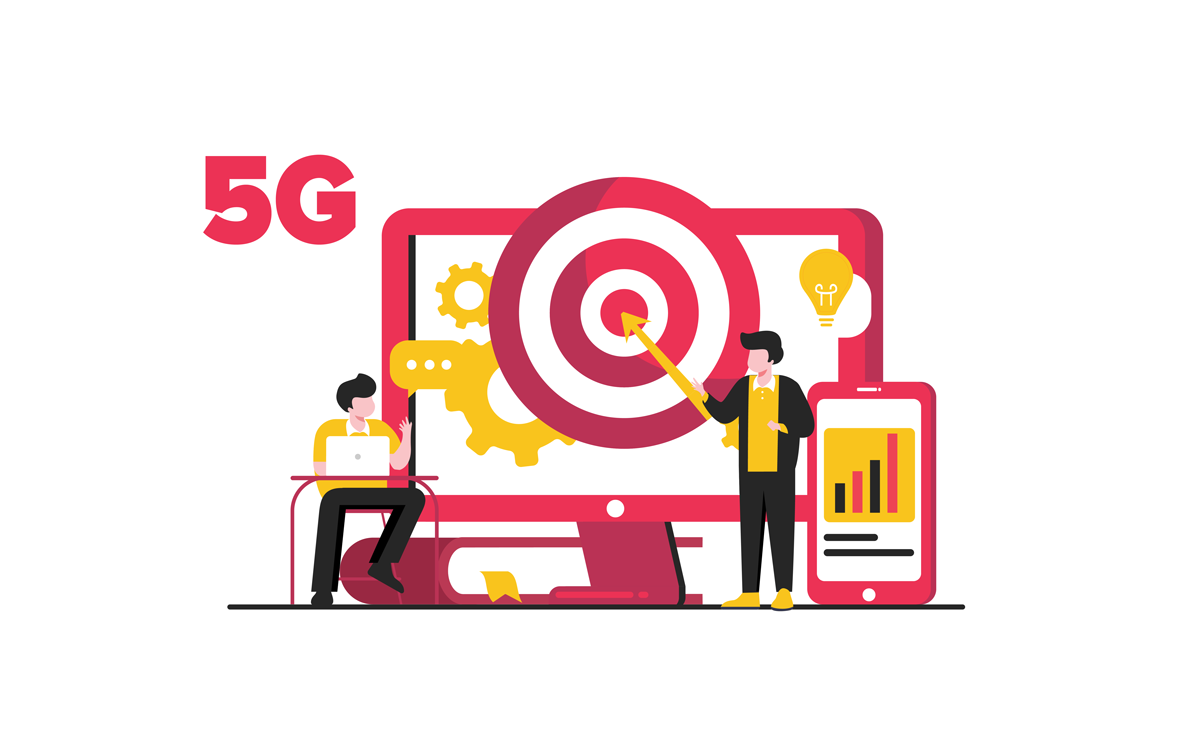Sticky Cube Desktop – an innovative ad format for maximizing monetization and UX
In today’s fast-paced digital advertising landscape, it’s more important than ever to strike the right balance between effective monetization and…

For over a decade, network designers have been working on 5G, which is slowly becoming a reality, and which looks set to drive changes not only in consumer behavior, but also in all industries. As 5G takes on what will be a game-changing role, more and more questions and challenges will arise; and here we would like to consider how 5G will impact Programmatic advertising in particular. But first, let us consider what 5G is, and how it’s going to function in the new landscape of its own making.
5G is the 5th generation mobile network that will take over from the 4G LTE connection. With a significantly faster data speed, 5G promises to change the way our devices communicate with wireless networks and deliver valuable opportunities for every industry. Simply put, this fast connection will be like lightning speed.
So what are the differences between 4G LTE and 5G? Well, 5G uses more advanced radio technology; and therefore the network itself will deliver various improvements, such as more efficient signals and connectivity, the optimizing of network effectiveness, and faster download speeds. The transition from 4G to 5G is being promoted as a massive step towards the future of user experience and the technological advancement of countries. Let us now dive deeper into the impact that a 5G-driven world will have on Programmatic Advertisers.

Following its release, Programmatic vendors might have high hopes, and advertisers might become more experimental; but only if both parties become early adopters of the new technology. This will certainly affect ad load times, as well as the viewability of ad inventory. Here, we’d like to share with you those aspects of the Programmatic landscape that may change after the transition:
5G can improve device speed by 22 times: from 45Mbps to as much as one gigabit, which will result in hyper-speed real-time bidding. This will require a more compatible Programmatic technique, one that keeps up with the new speed of the decision-making process. Currently, Header Bidding is faster than water-fall, but it might be inefficient for the new faster future which will demand less background actions before the final decision is made. What could the consequences be for Header Bidding? Most certainly, a growing demand for tools/wrappers that provide a shorter response time.

Programmatic advertising needs tags. Very often, ads stuffed with tons of tags or redirects weigh more than those ads with fewer tags. Also, increasingly we find ourselves in situations where tags are blocked despite the demand for specific content – the perfect example being COVID-19 and its negative impact on the top advertisement on the New York Times homepage.
Luckily, more and more Programmatic vendors recognize the cons of unduly tagging an ad, and are seeking solutions that will enable the fixing of problems related to brand safety or high fraud percentages. 5G can positively contribute to limiting the usage of tags; as more and more Publishers are opting for real-time pre-bid algorithms for decision-making and measurement, which will accelerate the whole process instead of slowing it down. Delivering more creative and faster ads will be the key in terms of satisfying everyone’s needs, and making the most of the opportunities afforded by these new speedy times.
While for many Programmatic stakeholders, AI is still just an algorithm that optimizes AdOps, along with the running of the campaign. The AI of the future will be indispensable for Publishers and Advertisers in terms of performance optimization. Here the leading roles will belong to the new ways of collecting data, and to hyper-localization. With a more rapid 5G decision-making process, vendors will support it with upgraded Ad Tech capabilities. Let’s explore how these vistas can impact on the very face of Programmatic.
Delivering personalised ads is crucial for the Ad Tech industry. In the future, this approach will become commonplace. As things currently stand, the processing and analysing of real-time data is still too slow. With the introduction of 5G, data will be the basis for creating people-based marketing. The analysis will take place in the present time; this is set to impact on the message which people will get, especially considering everything we know about the user. It will allow for the integration of different types of actions and impressions. We have already had a foretaste of this – but at a slower rate and in a less creative way. 5G will enhance the evolution of data analytics towards integrated AI with customer experience; with better creatives that will allow users to interact. This will be an interaction with more videos and faster reach. Hyper-localization will provide better customer segmentation. As a result, targeting users will become more important. This means that understanding their behaviours will be easier and faster to track. Programmatic vendors will be able to provide the customer with the information/ services they are looking for, in a flawless experience, and with a personalized touch.
The most important factor for which 5G will be responsible is the elimination of delays. For the Ad Tech industry, this will mean less usage of ad blockers by users (according to HubSpot, 36% of people who use ad-blockers maintain that the slow load speed is the main reason behind ad blocking – 5G can easily address their concerns), as well as faster ad load time and more quality page views. Also to benefit from this transition will be higher resolution ads. 4K videos or more personalized advertising in real-time will also be possible due to this transition.
This means that Programmatic vendors need to maximize benefits by taking full advantage of the transition, and by paying close attention to the latest novelties within their respective industries.
The Ad Tech industry is already beginning to contemplate what the people-based marketing of the future will mean. We need to remember that this prospect could be made complicated by the demise of 3rd-party cookies. It might take time to fully implement the transition, particularly taking into consideration such a disruption like Google’s bold move, which is looming on the horizon. Nevertheless, the final results might see ground-breaking ventures for Ad Tech. We are closely following the developments related to the introduction of 5G; coupled with all the innovations and changes that are shaping our industry.
We at Yieldbird will be happy to help you avail of the unique opportunities afforded by this 5G faster future.

Karol Jurga
Chief Revenue Officer
See it in action.